Age, income and wealth make no difference to regressive attitudes, the data reveals, begging the question of what will: Betwa Sharma in conversation with data journalist Rukmini S.
By Betwa Sharma
Special to Consortium News
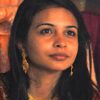 There are many stereotypes about India, but a new book explodes myths about the country that are believed by people outside the subcontinent as well as by Indians themselves.
There are many stereotypes about India, but a new book explodes myths about the country that are believed by people outside the subcontinent as well as by Indians themselves.
Whole Numbers and Half Truths: What Data Can and Cannot Tell Us About Modern India by Rukmini S, a data journalist, challenges widely-held beliefs and debunks media coverage far removed from the data.
In this first of a two-part, wide-ranging interview, Consortium News speaks with the author about what the data reveals about India.
Rukmini researched, among other matters, how Indians think, work, love, vote, communicate and police themselves. Her account is contrary to the image many Indians have of themselves as a largely tolerant nation, peopled with mostly liberal citizens, who, despite great odds, adversity and backsliding, remain committed to the democratic, secular and pluralistic values of the Indian Constitution.
Rukmini found that India, the largest electoral democracy in the world, where all manner of elections — village, municipal, state, and national — are happening all the time, is less committed to democratic principles, freedom of speech, free operation of the judiciary and the opposition, than most other countries.
The data reveals that India, a country of 1.2 billion people, where close to 80 percent are Hindus, 14 percent are Muslim and the rest are Christians, Sikhs, Buddhists and Jains, has held majoritarian views for a long time. But what is new and inescapable, the author notes, is the intensity of anti-Muslim sentiments, propaganda and violence since the Hindu nationalist Bharatiya Janata Party led by Prime Minister Narendra Modi came to power in a sweeping victory in 2014, winning with even greater numbers in 2019.
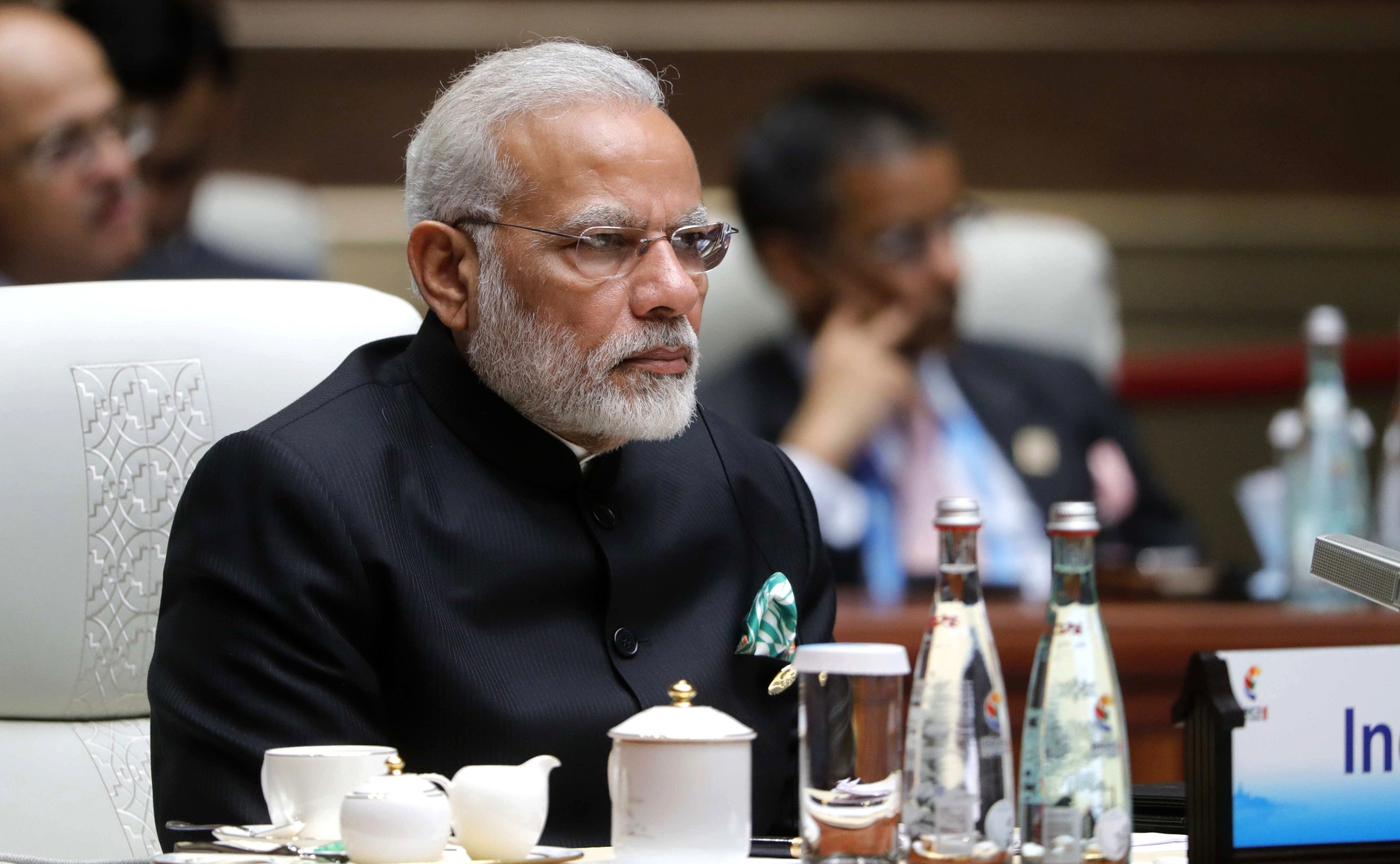
India’s Prime Minister Narendra Modi in 2017. (Kremlin.ru, CC BY 4.0, Wikimedia Commons)
On caste, the data reveals that Indian society continues to be steeped in casteism, where the banned practice of untouchability is still followed, not just in rural India, but in cities as well. While there appears to be more latitude for women choosing their life partners, the data reveals that Indians believe that women should be subservient to their husbands and should not go out for paid work.
India, which recently surpassed the United Kingdom to become the fifth-largest global economy, has the Earth’s largest population below the age of 35, with considerable smartphone and social media penetration despite the massively varying social and economic realities of the second-most populous country in the world.
But age, income and wealth make no difference to regressive attitudes, Rukmini found, begging the question of what will.
“This is not a liberal country nor do most Indians see liberalism as a virtue,” she writes in the second chapter of her book.
“Age, education and levels of urbanisation and income do not produce the moderating, progressive liberal effects on views that we in our popular imagination in India assume they do,” she said in the interview.
Ignoring what the numbers say about what Indians believe — seemingly unchanged by greater exposure to technology and social media — delays any attempt to address deep-seated societal problems that have not been acknowledged or papered over for a long time, the author says. This does not bode well for India and its future generations.
The second part of the interview expands on how this intolerance informs the way India votes, but Rukmini still makes the case for the Indian voter being sophisticated, multidimensional and big on ideas, to whom the opinion polls so far do little justice.
You found that India has demonstrated far less commitment to democratic principles, greater support for army rule, and a strong leader than most other countries. Were you surprised to learn this?
I was not, and the reason I was not is that I have been seeing this in opinion polling for several years now, and I feel that it was getting reported in a piecemeal and disjointed manner. I don’t think people reporting and engaging with these issues in the public conversation had internalised what the numbers were saying.
The absence of a commitment to democratic principles has continuously and systematically been demonstrated in opinion polling. While I was not surprised by the numbers, I am surprised by people’s surprise at the numbers. People who are in the field of engaging with these sorts of numbers had not taken this on board.
The fallout of that ends up being the several undemocratic directions India has taken at many moments in its history, but also substantially at the moment come as a surprise to people because the numbers are not being seen in the continuum they are.
When you see these numbers systematically over time, they should have given people thinking about India pause about what is happening systematically under and over the surface and realign their notions about India much earlier. I, in the media, feel as much complicit as everyone else in not foregrounding what we should have been talking about for a long time.
I’ve found that privileged people living in the so-called liberal bubble were more surprised by the current state of affairs than people who have been at the receiving end of undemocratic behaviour even before 2014.
A lot of times, we associate this sort of data-free thinking with people on the right. You assume that on the economic right, people have a vision of a far richer country than it is. On the social right, you imagine that people have a picture of a much more casteless society than exists. But in this particular instance, when it comes to views around majoritarianism and inter-group relationships of any sort, I think the wishful and data-free thinking was on the part of the liberal progressive left. And in part, it was driven by wishful thinking.
This notion they have held onto for a long time of a largely secular, democratic country, of fringe elements that pop up in a frenzy of violence every once in a while, is something we have internalized through the media, popular culture, and some of the speeches by very well-intentioned people.
The organisation of Indian society as being extremely hostile to any inter-group mingling or relationship or communication of any sort is not something we have taken on board. Some of the numbers that I looked at in opinion polling have held steady for a while now. These are not new feelings that have popped up post-2014.
The majority of Indians in opinion polls say they are opposed to inter-caste and inter-religious marriages, large numbers of people say they do not have friends of another religion or caste, and a significant share of people, even in urban India, say that someone in their family practices untouchability. A large, significant share of people in a smaller study of a few states felt comfortable saying to surveyors that laws should be brought in to outlaw inter-religious marriage.
Donate Today to CN’s 2022 Fall Fund Drive
In popular culture, Indian society is not described as being hostile to all but its own immediate ethnic group, but that is what the data says and a lot of what we have been seeing anecdotally. We are seeing laws being brought in to discourage inter-religious marriage. We are seeing violence against backwards castes. We are seeing a lot of violence against Muslims.
We are seeing all sorts of criminalisation and intimidation around all sorts of mixing between religious groups. Places of worship that were shared between groups are being actively weaponised and polarised. This form in which Indian society operates is not something that we have talked about enough.
Why is it important for journalists to engage with the data?

Indian journalists, reporting from field, are not engaged with data. (Marchaud Wittouck/Wikimedia Commons)
In a way, it reflects my own journey as well, having been a field reporter who didn’t engage with data, simply because I wasn’t exposed to it. With most Indian journalists, there is no intention of not engaging with political thought and numbers. It’s just not part of the practice. That is something I came around to later in my career and then fit the two together in the kind of matrix of the country that made sense.
For many good reasons, opinion polling in India, the U.S. and many other countries have got a bad rap; part of the reason is that polling often seems to get the outcomes of elections wrong. And by reducing polling to that one number — who is going to win the U.S. election or who is going to win this particular seat in India — we made it whether a poll gets it right or wrong. The whole host of questions around voters and their thinking gets completely missed or hidden in the popular narrative and it gets reduced to almost sports-level reporting of numbers only.
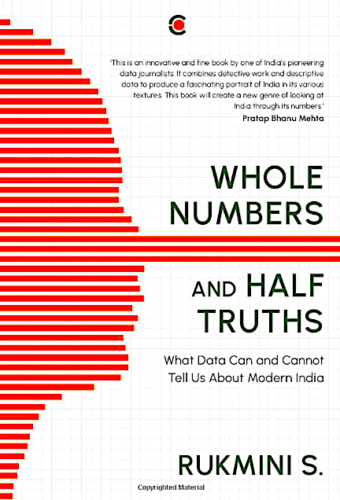 At least in the U.S., there are organisations like Pew that are publicly funded with a mandate to understand people’s thinking, not necessarily tied to elections alone. That field of inquiry has really suffered from a lack of funding in India. We have allowed the incentives and margins to be so broken that the media commissions opinion polls around elections and then they are invested in one single number.
At least in the U.S., there are organisations like Pew that are publicly funded with a mandate to understand people’s thinking, not necessarily tied to elections alone. That field of inquiry has really suffered from a lack of funding in India. We have allowed the incentives and margins to be so broken that the media commissions opinion polls around elections and then they are invested in one single number.
Simultaneously most journalists also do not have the tools to sift between the opinion polls and figure out what is worth reporting on and what’s actually telling you something. This means that most journalists, particularly for political reporting in India, are going on completely data-free and then the well intentioned ones believe that speaking with people “on both sides or all sides” gives you an “objective or unbiased” view.
Increasingly I feel that the pursuit of objectivity is almost a false pursuit and more of us have to accept that we are mortals with biases and try to be fair rather than some robotic notion of objectivity. To come back to your point of why it is essential for people in the field to engage with all of this, it is because I think we have given over political reporting to people to come up with purely anecdotal descriptions and we now have to come to terms with biases, not just inbuilt and mortal, but also the more nefarious biases that to operate in the world of reporting.
We are getting a pretty problematic slice of reality relayed back to us as fact and in the absence of any data perhaps that would have been our best option. But I do want to make the argument that all opinion polling is not bad. We need to figure out what is good and use it to inform reporting.
How far back does the data go?
Some of it goes back all the way to the fifties. I would say decent comparable data for India goes back to the early nineties.
There is also a lack of commitment to freedom of speech and expression, free operation of the judiciary and opposition parties, and a fundamental mistrust of human rights organisations, you found. It seems like Indians don’t seem to believe in any avenues to challenge the state.
These numbers are worrying for people who believe in free speech and expression. They are also worrying because of the fact that they are comparable if not lower for India than some deeply authoritarian countries.
Here again, we have some indications that movements that seem to have been in opposition to governments in the past have been led with some pretty authoritarian structure and intent. But because they seem to have been in opposition to the government, the undemocratic nature has bypassed conversation.
We have cheered people who have carried out mass demolitions in the past, not just in the recent past, it has happened in the more distant past as well. We have cheered such public officials as being tough on crime. We have long tradition in India of cheering extrajudicial assassinations of people who are seen as being against law and order or against the state.
To see public celebrations following police encounters of people accused of crimes that they have not even been convicted of should really underline what we are seeing in the data, which is a lack of commitment to avenues of public challenge. Sometimes, some of these movements come with a veneer of spiritual purity and that has easy take-up in India, and it doesn’t look like a fascist or an authoritarian movement. That is something uniquely Indian — the spiritual intersections with authoritarianism.
When you and I were growing up, there were probably uncles in our family who fondly recalled the Emergency as being the time when trains ran on time. So that kind of placing of efficiency or law and order above all else is something that comes from a place of great privilege because all else is something that falls on the marginalised.
“ … some of these movements come with a veneer of spiritual purity and … it doesn’t look like a fascist or an authoritarian movement. That is something uniquely Indian — the spiritual intersections with authoritarianism.”
This runs very much through the veins of the upper classes for sure. This sort of commitment to freedom of speech of others, of oppositional values, of everybody’s rights, I’m not sure if it is deep-seated in India, and I’m not sure how important it is in conversations growing up. You and I remember the Emergency-supporting uncles but it is much harder to recall the aunts in the family who said that we should support the right of everyone, even if they are in opposition, to hold views.
Why does it feel so much more palpable now?
I don’t know if I have an answer at the broader level, but one specific strain is more palpable now because it exists much more, which is anti-Muslim rhetoric and violence. What is absolutely evident is the level and widespread, popular and administrative support for anti-Muslim talk and anti-Muslim violence. That seems absolutely widespread and rampant right now. There isn’t widespread opposition to it. It is perfectly acceptable to say the sort of things that are being said as we know from just opening up the nightly news.

Flames rise from Shimoga, Karnataka after Hindu-Muslim riots in 2010. (Nishanth Jois/Wikimedia Commons)
Indians believe that government elected officials care for them and even that the state is working towards their welfare. Indians were most satisfied with how the country was functioning in 2019, you found. Why this trust in the state?
This is where I feel if opinion polls were done in a better fashion, they would be able to tell us so much more about the country right now. I do feel there is a strong intersection between public support for a government and perception of how well they are doing. The structure of questions that ask extremely simplistic questions that play to a social acceptability bias where voters or respondents feel obliged to give particular sorts of answers has limited our understanding of people’s decisions.
In 2019, which was a time of extremely high unemployment, people were asked what they would vote for, and they said jobs but the incumbent was retained. The more we go on taking these sorts of answers at face value, the greater the disservice we are doing to our understanding of politics, people, and society.
Indians also believe in muscular majoritarianism and believe that people who don’t say Bharat Mata Ki Jai should be punished and even people with graduate and postgraduate degrees believe that those who don’t respect cows should be punished. So, education makes no difference?
This is a running theme through the chapter. Age, education and levels of urbanisation and income do not produce the moderating, progressive liberal effects on views that we in our popular imagination in India assume they do. From these opinion polls, young people do not hold more progressive values than their parents or even their grandparents.
The levels of inter-caste marriages in India are entirely unchanged over the last 70 years. The share of inter-caste marriages among those in their twenties is no different from people in their 90s. It remains at under 5 percent in India and a large number of those are within the overall caste grouping rather than completely caste group crossing.
Young people are saying they do not support inter-caste, inter-religious marriage to a greater degree than views expressed by their grandparents. They are not saying they have greater commitments to free speech or to secular values than older people. This is something that has gone under the surface a little bit and partly it is because in most of the world, there has been a drift towards more progressive values among younger and better educated people.
“Age, education and levels of urbanisation and income do not produce the moderating, progressive liberal effects on views that we in our popular imagination in India assume they do.”
And perhaps there was a borrowed idiom for India as well which is that these same processes would apply in those same ways. I think for a while now, there has been a clear and loud public realisation that young people are not progressing in progressive values, and if that is a concern then what do we need to do to make it change? That’s not just happened.
The data shows far more Hindus than Muslims would rather not have neighbours from a different faith, but when it comes to interfaith marriages both religious groups are against it, you found.
Overall, in terms of inter-group mixing, there is great resistance and hostility among all sorts of mixing including having friends, sharing meals, wanting to live next to each other. All of those are pretty low numbers including the outright practice of not renting to Muslims, the outright practice of untouchability, that continues to exist even in urban India.
When it comes to marriage, it becomes a particular bridge too far. It is not much of a leap of reasoning because of the highly endogamous nature of marriage in India. All sorts of levels of mixing within groups are very low. To me, the hostility is not surprising but the inability or unwillingness to express these views is particularly surprising. It really makes me feel that a young person in India attempting an inter-caste or interfaith relationship or marriage is one of the bravest people in the country.
Are there any signs of change ?
In terms of talking the talk, there is some improvement. The share of people for example on matrimonial websites who are open to looking at prospective alliances from those outside of their caste as well. But unless we see an increase in actual marriages, I don’t know if we should anticipate that the talk translates into action. These are not simply not personal leaps of faith. They come along with a real threat of violence and ostracisation. If young people decide to move even closer within their own groups, you would see why they are doing that given the hostility they encounter in society.
You found that untouchability is rife — in 2011-2013, 30 percent of rural households reported practising untouchability while in urban areas the corresponding figure was lower at 20 percent. When you say untouchability, does it mean literal untouchability, not allowing the domestic help into the kitchen kind of thing?
Yes it is. We have very little surveying around untouchability. So, the survey we rely on which is the India Human Development Survey asks limited questions about untouchability and it has to do with sharing utensils and use of the kitchen. So exactly the sort of example you give in fact. On those stark measures these are the numbers and on the more subtle practices, which are harder to capture through surveys, would be even higher.
I follow these numbers up with an example that talks about meat eating where the young man who I spoke with spoke very eloquently about how some of the crudest forms of untouchability that his grandmother experienced in urban India — he says “my colleagues even now faced a sign on the office microwave that says no non-veg and that is untouchability too.”
On women’s rights, you find there is support for Indian women to choose a partner, but Indians largely believe that women should be subservient to their husbands, men can discipline their wives, and women should not perform outside paid work. Could you put the privileged bubble you and I occupy, where we see financially independent women more in control, in perspective?
I do think this is one of the areas where education and income do have an impact on progressive beliefs around women’s rights to choose things for themselves. The overall national picture is bleak in terms of even having the ability to have any say on your marriage, to choose a partner, to be able to take any decision around the household purchase, to have any assets in your own name, to have any cash on hand, to be able to even go the doctor without permission — all of these numbers are pretty bleak, particularly in the north and centre of the country.
And yes, in part it is a bubble that you and I inhabit where women who are better educated have more control over our lives. But one of the indicators that give me pause over here is labour force participation reads.
“The levels of inter-caste marriages in India are entirely unchanged over the last 70 years. The share of inter-caste marriages among those in their twenties is no different from people in their 90s.”
Even if we talk about our bubble, our bubble with a slice of better educated richer upper caste women, we should be seeing very high levels of labour force participation and being in the workforce. But we don’t see that.
Overall in the country, we have one of the lowest levels of female labour force participation of any country in the world. This is an indicator that has not risen but has fallen substantially. It is also extremely low for extremely well-educated and rich women. There is a lot of ongoing research about it and I don’t think the last word has been said about why these rates are so low in India. But I do think we cannot ignore that exiting your father-in-law’s house to do paid work outside requires some battle to achieve. I don’t think being richer and better-educated necessarily frees women from this bind automatically.

Paltan Bazaar, Dehradun, India, 2010. (Paul Hamilton, CC BY-SA 2.0, Wikimedia Commons)
Between 1990 and 2014, those who opposed homosexuality fell from 89 percent to 24 percent, from an overwhelming majority to a clear minority. Between 2014 and 2019, the share of Indians who believe homosexuality should be accepted by society more than doubled, you found. What happened?
I don’t know the answer but I do think there is an interesting direction to think about social change and the law and when one drives the other. Given that decriminalisation occurred in 2018, I feel it is an avenue to explore whether it made people perhaps feel that if the Supreme Court says that it is not criminal, perhaps I should change my views, or if it allowed people who already had people in same-sex relationships in their lives — children, nephews and cousins—it made them feel that this is something they have already seen and now even the law said it wasn’t criminal.
But I do think we need to be a bit circumspect given the lived experience of people in same-sex relationships and the extent of threat and violence they experience even from the police who should now know the law better. The share of those who found homosexuality was always justifiable — that is how the question was framed — was just 3.5 percent.
“Young people are not saying they have greater commitments to free speech or to secular values than older people.”
It is certainly worth thinking that if an important constitutional authority comes out with clear and resounding support of a position, can it change societal values significantly? It makes you think about what could be done if the courts came out strongly in support of interfaith relationships or other democratic principles.
This was one of the areas where there was mass media support as well. I don’t think there were 9 p.m. debates vilifying gay people as you would see against Muslims, for example. If Indian society does decide to come together, can we drive change? It is at least a happy thought.

Common worship shrines of Hindu and Muslims , Village Tadauli , SAS Nagar , (Mohali) Punjab. (Harvinder Chandigarh/Wikimedia Commons)
This is not a liberal country nor do most Indians see liberalism as a virtue. The majority described themselves as traditional. “There was once an assumption that education and urbanisation would drive change towards more liberal values. That is not the case. Education and wealth do not impact the likelihood of experiencing bias.” Was this difficult to write?
Not for me personally, I occupy a position of great privilege. But I do feel for the people, whose experiences of violence and bias I include in this chapter. It made me cognizant of just how deep these values run. One of the things I took away from it was that there is a lot of work, and I can’t even see the first steps of that happening around. We do not have a national consensus that Muslims have an equal right to this country. It’s my personal belief obviously, but I do not believe that is a broad belief.
But if education and wealth don’t change things, what will?
This made me feel that change will not happen naturally, and we must find ways to make it happen. Going back to the views on homosexuality, is that the model? If you have legal change and a lot of public support. Suppose you have the media fully there. Suppose you have all major players in it. No major party brought a bill (in parliament), but no one was up in arms saying we were going to intervene in the Supreme Court and strike this down.
If there was no public support, there was a lack of opposition. It makes you think whether these are the arms that need to come together. So the quicker we take on board that this is not going to be automatic, the quicker we can start asking the question of what needs to be done.
Betwa Sharma is the managing editor of Article 14 and the former politics editor at HuffPostIndia. She has contributed to The New York Times, The Guardian, Foreign Policy, The New Republic, Al Jazeera, Time Magazine and The Intercept.
The views expressed may or may not reflect those of Consortium News.
Donate Today to CN’s
2022 Fall Fund Drive
Donate securely by credit card or check by clicking the red button:

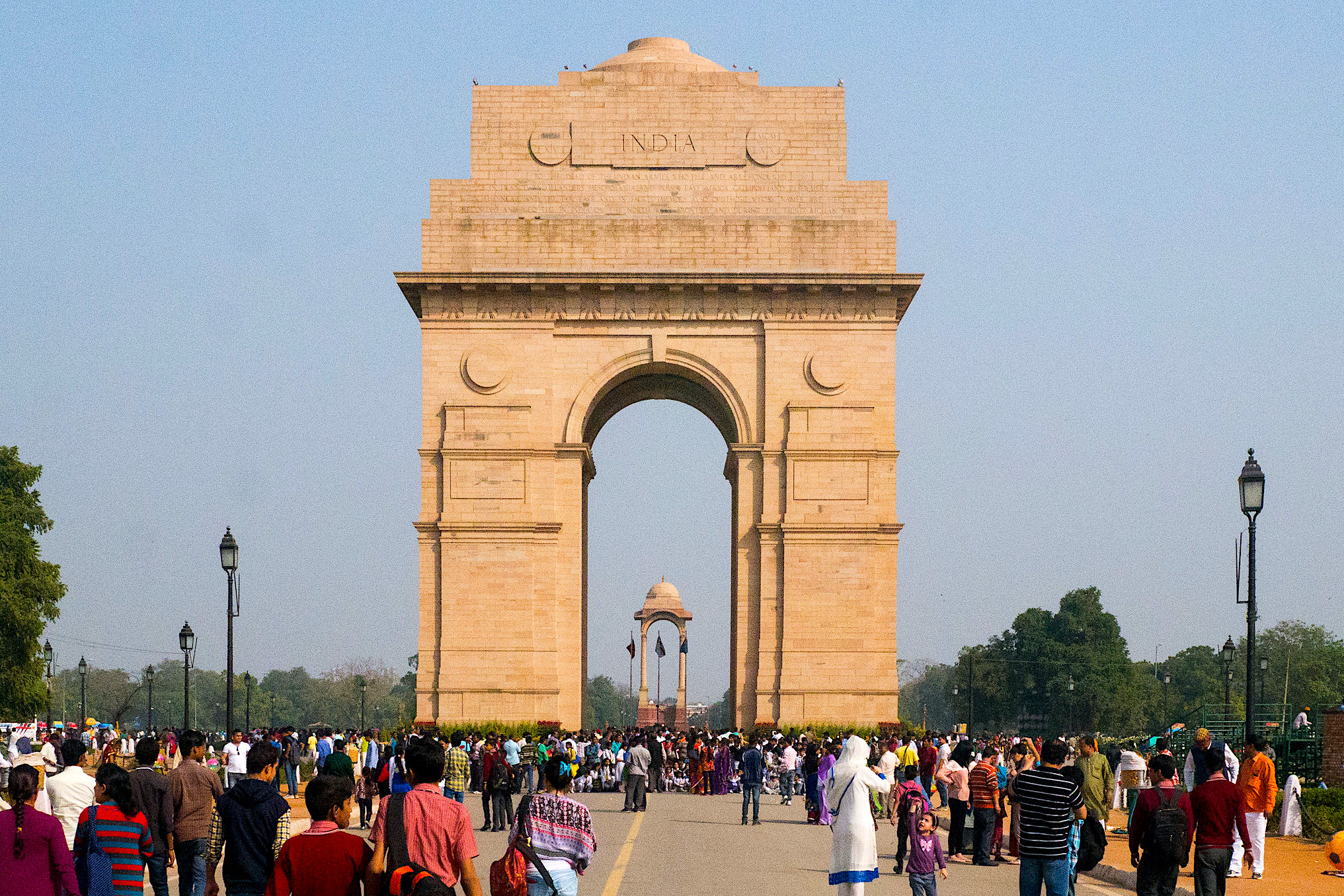
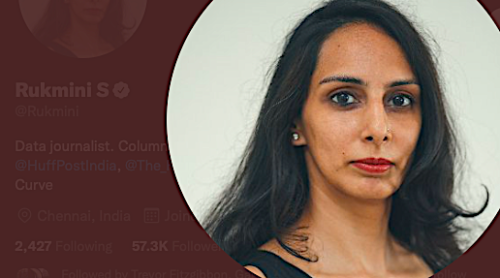
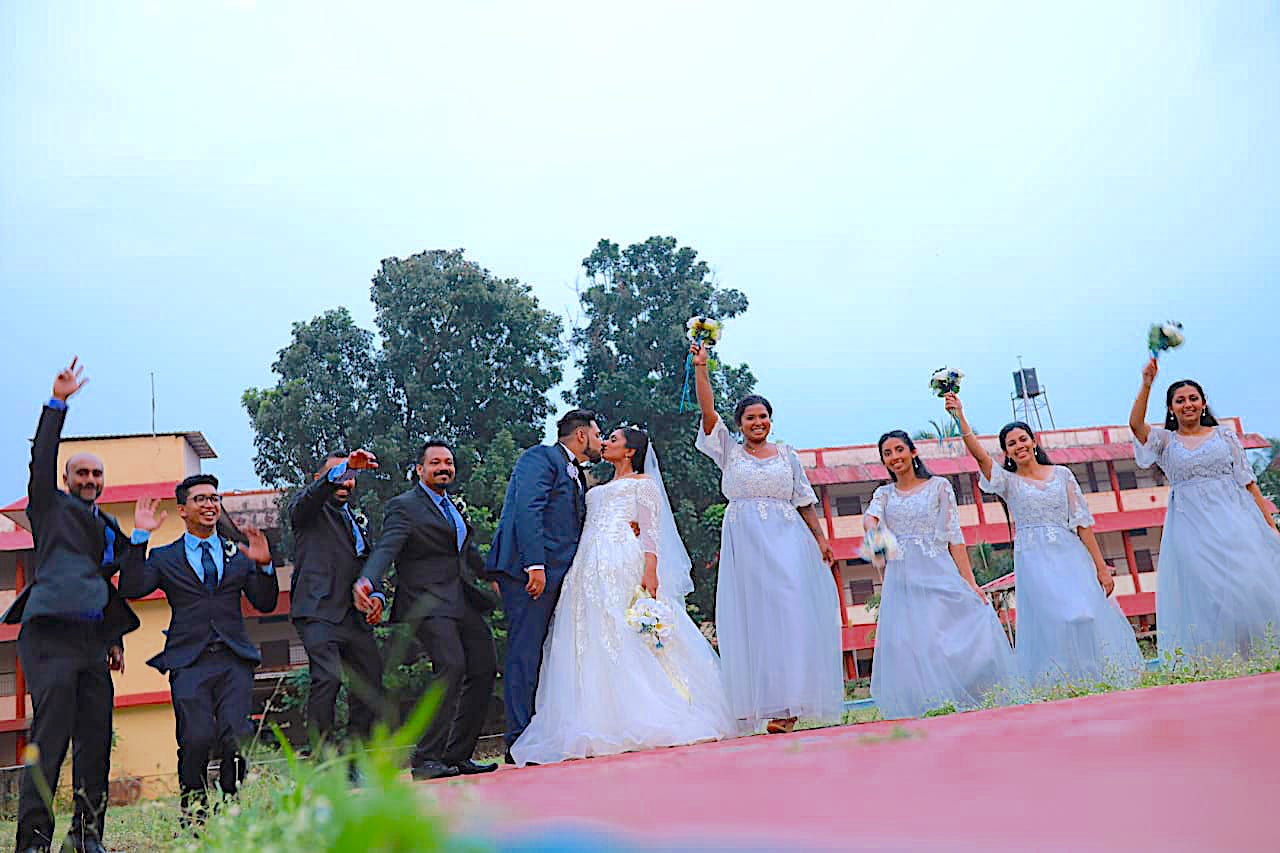
“[T]he image many Indians have of themselves as a largely tolerant nation, peopled with mostly liberal citizens, who… remain committed to the democratic, secular and pluralistic values of the Indian Constitution.”
Seriously?
Anyone, either inside or outside of India, who holds to this image of contemporary India (or of contemporary Britain for that matter), has been living under a rock — or to put it in more political/historical terms, knows nothing about British Colonial rule and its legacy.
God save the Queen?
In other words, liberal, democratic India is just as liberal and democratic as bigoted America.
Untouchability in the culture of India, apparently, is equivalent to the racism in the culture of America.
How astonishing! Human beings are pathetic representations of what an imagined civilization actually consists of, in reality.
No man (or woman) is an island entire of itself; every man
is a piece of the continent, a part of the main;
if a clod be washed away by the sea, Europe
is the less, as well as if a promontory were, as
well as any manner of thy friends or of thine
own were; any man’s death diminishes me,
because I am involved in mankind.
And therefore never send to know for whom
the bell tolls; it tolls for thee.
I’ll venture to say that the author of the book being reviewed and the author of this article are of similar backgrounds (classes) despite their differing points of view.
Thank you very very much, Betwa Sharma, for this article. Many westerners are deluded into thinking that people in “poorer” countries are somehow more spiritual and nicer . The truth is that as Europe rose to prominence , social development in these countries stalled . I have been stunned at some of the attitudes I have encountered amongst Indians – women who feel ashamed because they only have daughters , maids abused simply because they are low caste. bWT , this is not solely an Indian issue , many developing countries have similar situation.
Few people are genuinely tolerant of other, seemingly opposing, opinions and attitudes – which makes true peaceful liberalism and democracy impossible without strong external social containment influences, such as religion, family, and community.
We like the notion of liberalism and democracy but find it difficult to live up to such high standards of belief and behaviour. India is no different to other countries struggling to find ways to survive.